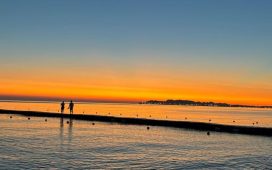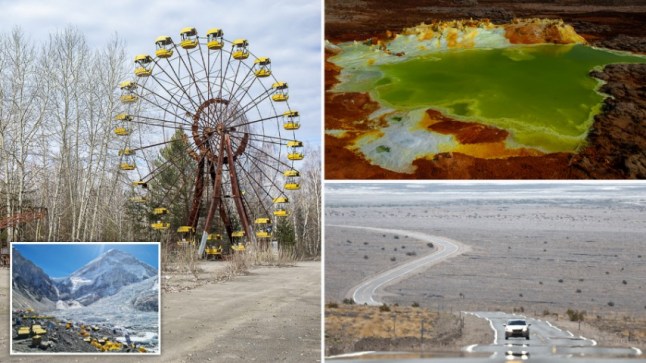
Shimmering deserts, cliffside hikes and volcanic landscapes — all captivating attractions that draw tourists in their droves. But they can be deadly.
Extreme tourism, where travellers engage in high-risk activities in dangerous and remote locations, is booming. The industry is projected to reach a value of $91 billion by 2030, up from $24.2 billion in 2022, according to Allied Market Research.
These experiences are something that baby boomers (the generation born between 1946 and 1964) in particular are looking for, according to a recent Booking.com report.
In fact, 23% of those surveyed expressed an interest in high-octane adventures such as skydiving — up from just 10% in 2024.
But while the world’s most dangerous countries are clearly laid out in the Foreign Office do not travel list, some of the most dangerous tourist attractions are less obviously risky. Lots are easily accessed on excursions, and some unfortunate explorers have paid with their lives.
We aren’t saying you shouldn’t visit these breathtaking corners of the globe, but they certainly don’t make for the safest trips — and should only be visited by the most intrepid of travellers.
Mount Everest, Nepal
Ok this one’s obvious: towering at 8,849 metres, Mount Everest, in Nepal, is the world’s highest peak. The mountain range is infamous for its perilous paths and desolate slopes that have claimed the lives of hundreds of climbers.
More than 300 people have perished on Everest since records began in 1922. The area above 8,000 metres elevation has become known as the ‘death zone’, because of the scarce oxygen available.
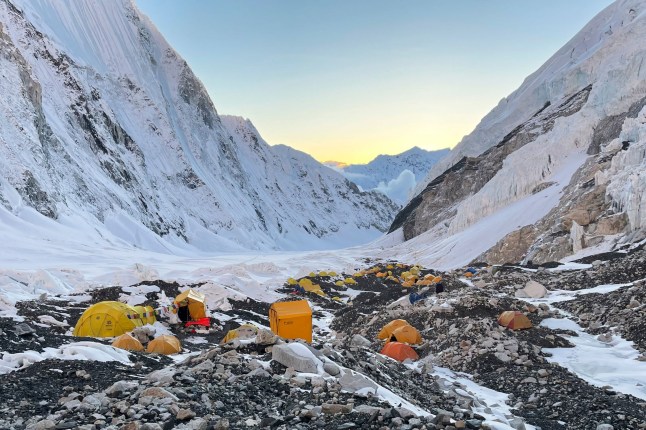
The extreme altitude can cause nausea, dizziness and, in severe cases, death, while brutal weather conditions, avalanches and deep crevasses are among the other risks you face on Everest.
An estimated 200 dead bodies have frozen on the mountain’s slopes over the years, with the environment too treacherous to risk bringing them down.
Former Made in Chelsea star Spencer Matthews shone a light on how difficult it is to recover bodies from the punishing mountain with his 2023 documentary Finding Michael.
Spencer’s brother, Michael Matthews, disappeared on Mount Everest just hours after becoming the youngest Briton to reach the summit, at age 22.
His body has never been found, despite the documentary’s attempts to retrace his steps, and speaking on the One Show after Finding Michael’s release, Spencer admitted that even with all the technology we have, body recovery is still ‘incredibly rare’.
Tourists keen to visit Mount Everest can do so by booking onto an expedition, but those who want to go past base camp and on to the summit will have to take on months of training and spend tens of thousands of pounds to do so.
As well as the cost of a spot on a guided trip, which can be more than £50,000, aspiring climbers must purchase a permit for Mount Everest, priced at $15,000 (£12,170), and hire a Sherpa — a highly experienced guide who lives in the mountains of Nepal.
Main danger: Altitude sickness
The Danakil Desert, Ethiopia
Another one of the hottest places on the planet — with temperatures regularly reaching 50°C — the Danakil Desert is one of the most inhospitable places on Earth.
On top of the unbearable temperature, the volcanic landscape is home to lava lakes, sulfur springs, and volatile geysers — all of which means putting a foot wrong can prove to be deadly.
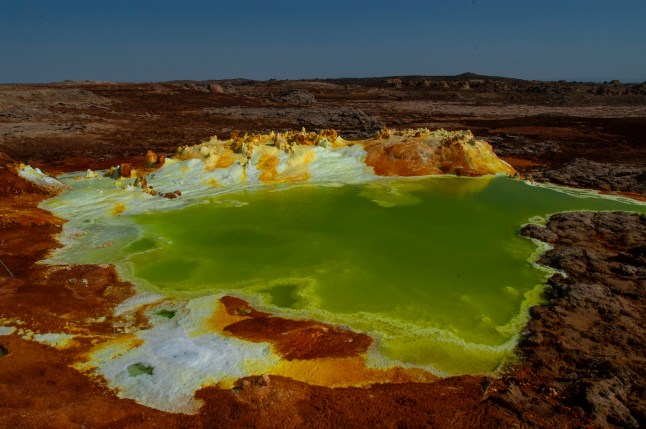
Coupled with toxic gases and acid lakes, and you have one of the most dangerous destinations in the world.
Nevertheless, it’s a geological spectacle, which is why tourists are so drawn to the perilous desert.
But any visitors to the area can only do so with a guide, who they must stick with at all times to ensure their safety.
Main danger: Heatstroke
Death Valley, California
Death Valley, in the California desert, is the hottest place on Earth, with Furnace Creek holding the record for the highest air temperature ever at a scorching 134°F (56.7°C).
This deadly heat has claimed the lives of travellers who venture off the roads, but car accidents are the most common hazard, because the terrain is so difficult to navigate.
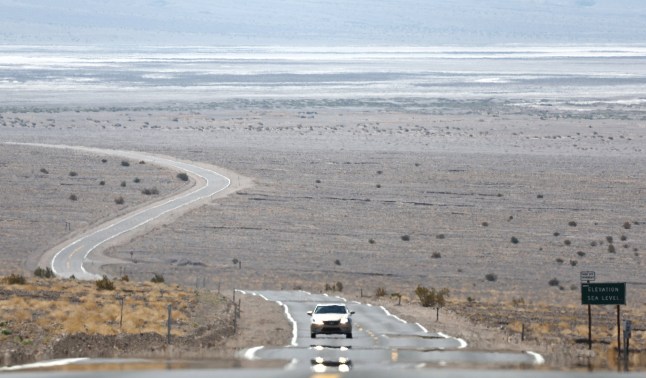
Between 2007 and 2024, 62 people died at Death Valley National Park — most of which were a result of road crashes.
And if that doesn’t sound dangerous enough, Death Valley is also home to venomous rattlesnakes.
Nevertheless, fearless tourists flock to the region, with roughly 1.1 million people visiting Death Valley National Park in 2023, according to the National Park Service.
If you fancy a trip to the searing valley, make sure to stick to the roads and drink plenty of water.
Main danger: Road accidents
Chernobyl Exclusion Zone, Ukraine
Pripyat, in northern Ukraine, was completely evacuated after the Chernobyl nuclear disaster in 1986, and has remained abandoned ever since.
31 people died after reactor number four at the Chernobyl nuclear power plant exploded.
But many more died in the months and years after the incident as a result of the radiation exposure, which has been blamed for disabilities, cardiovascular and circulatory diseases and cancers.
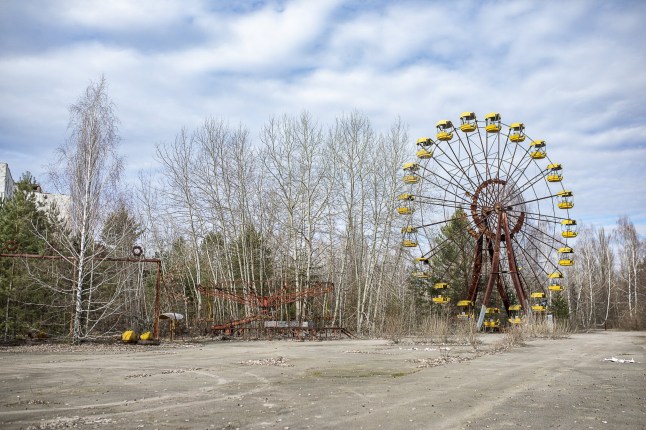
The International Atomic Energy Agency, however, says that health studies have ‘failed to show any direct correlation between radiation exposure and an increase in other forms of cancer or disease.’
But decades on, the area remains contaminated, and an area spanning 30 kilometres around the plant is considered the ‘exclusion zone’. It’s one of the most radioactively contaminated areas on Earth.
But that doesn’t stop curious tourists from paying a visit to the Chernobyl Exclusion Zone and the eerie ghost town of Pripyat.
Several travel companies offer tours of the area, and in 2019 Ukrainian President Volodymyr Zelenskyy announced it would become an official tourist attraction.
However, the area is currently closed to visitors due to the ongoing war between Russia and Ukraine.
Main danger: Radiation exposure
Snake Island, Brazil
Aptly named, this 106-acre island off the coast of Brazil is home to thousands of golden lancehead vipers, one of the world’s most venomous snakes.
Snake Island is the only place in the world where this particular species is found, and it is claimed there is one snake for every square metre of land.
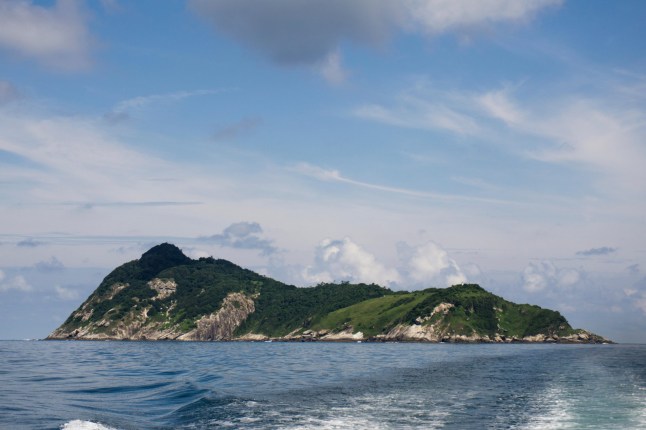
Though there are very few accounts of golden lancehead vipers biting humans, their venom is fast-acting and brings on a range of nightmarish symptoms, including kidney failure, internal bleeding and tissue death.
You can see the small island from São Paolo’s waterfront, but you can’t hop on a ferry over to explore.
The island is so dangerous that the Brazilian Navy has closed it to the public, and only a few people are allowed to set foot there.
In the early 1900s a few humans did live on the island, tasked with running the lighthouse. But legend has it they were killed by snakes, and the lighthouse has since been automated.
Main danger: Venomous snakes
Cliffs of Moher, Ireland
One of Ireland’s most popular tourist spots, the Cliffs of Moher tower over the west coast, offering an unspoiled view of the Atlantic Ocean.
However, the sheer drop comes with its perils. Strong winds, slippery paths and crumbling cliff faces mean the chances of falling over the edge are heightened, with many areas absent of railings.
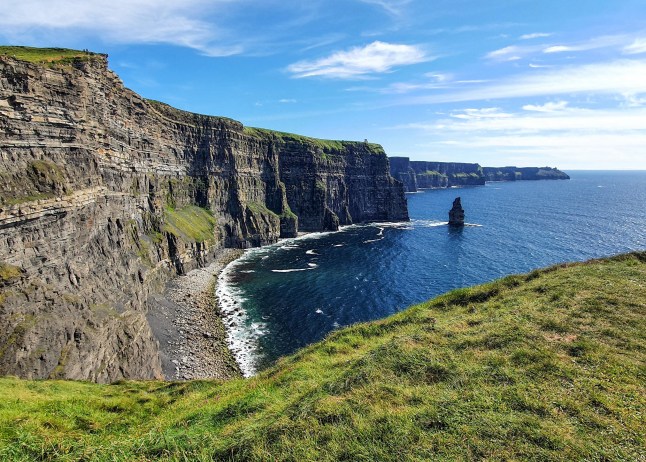
The most recent data available, from a study in the Journal of Travel Medicine, reveals that 66 deaths occurred on or at the base of the Cliffs of Moher between 1993 and 2017.
Last year, an inspection by Sport Ireland was undertaken after two young people died in the area. It found that many visitors were ignoring the warning signs and walking dangerously close to the cliff edge.
In addition, some sections of the walk were too narrow to cater for the volume of people travelling in both directions, resulting in some straying off the official pathway.
Nevertheless, the natural beauty spot is generally safe as long as visitors stay away from the edge, and its spectacular views draw more than one million visitors to the cliffs each year.
Main danger: Falling
Do you have a story to share?
Get in touch by emailing MetroLifestyleTeam@Metro.co.uk.
MORE: Start your trip off right with 30% off access to 1,700 airport lounges
MORE: The surprising tourist landmarks where taking photos is forbidden
MORE: Man, 20, crushed and killed by falling tree while trying to flee Storm Eowyn




